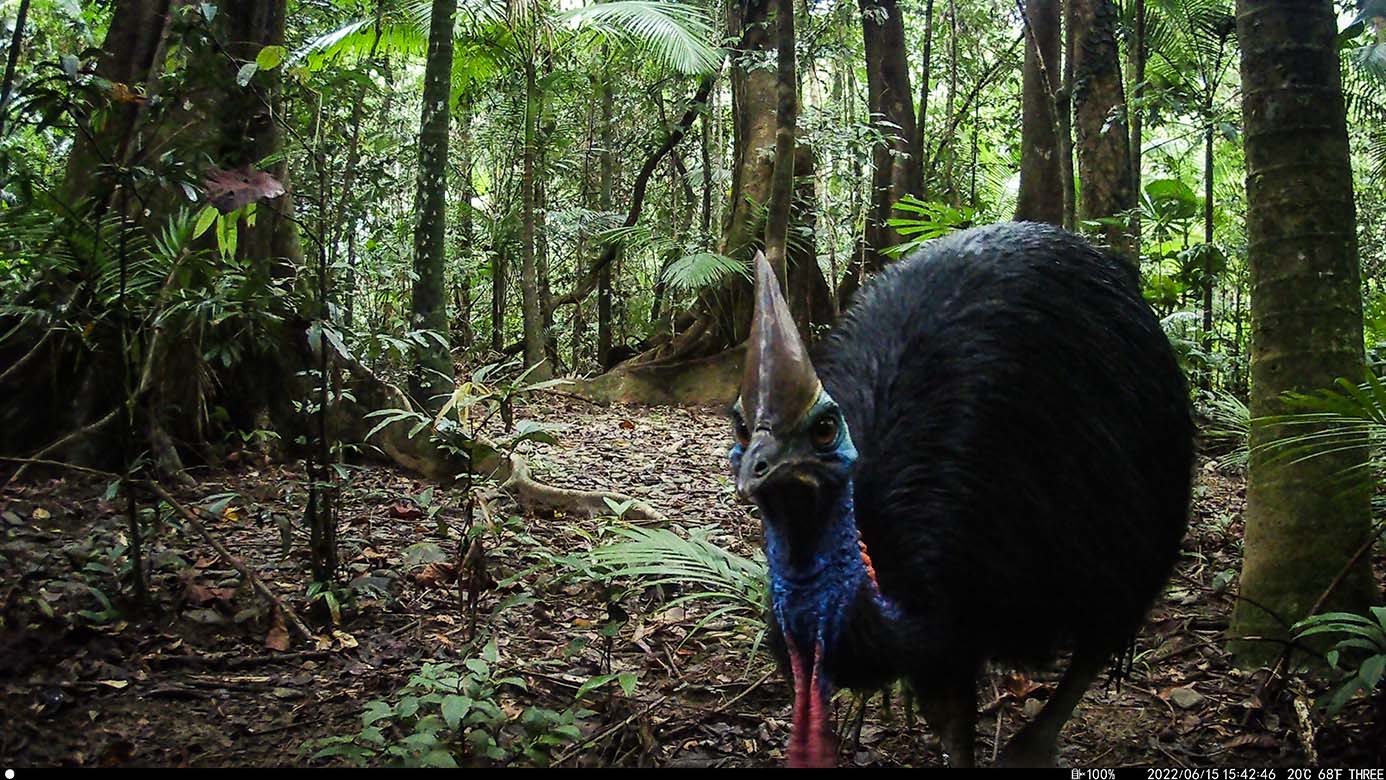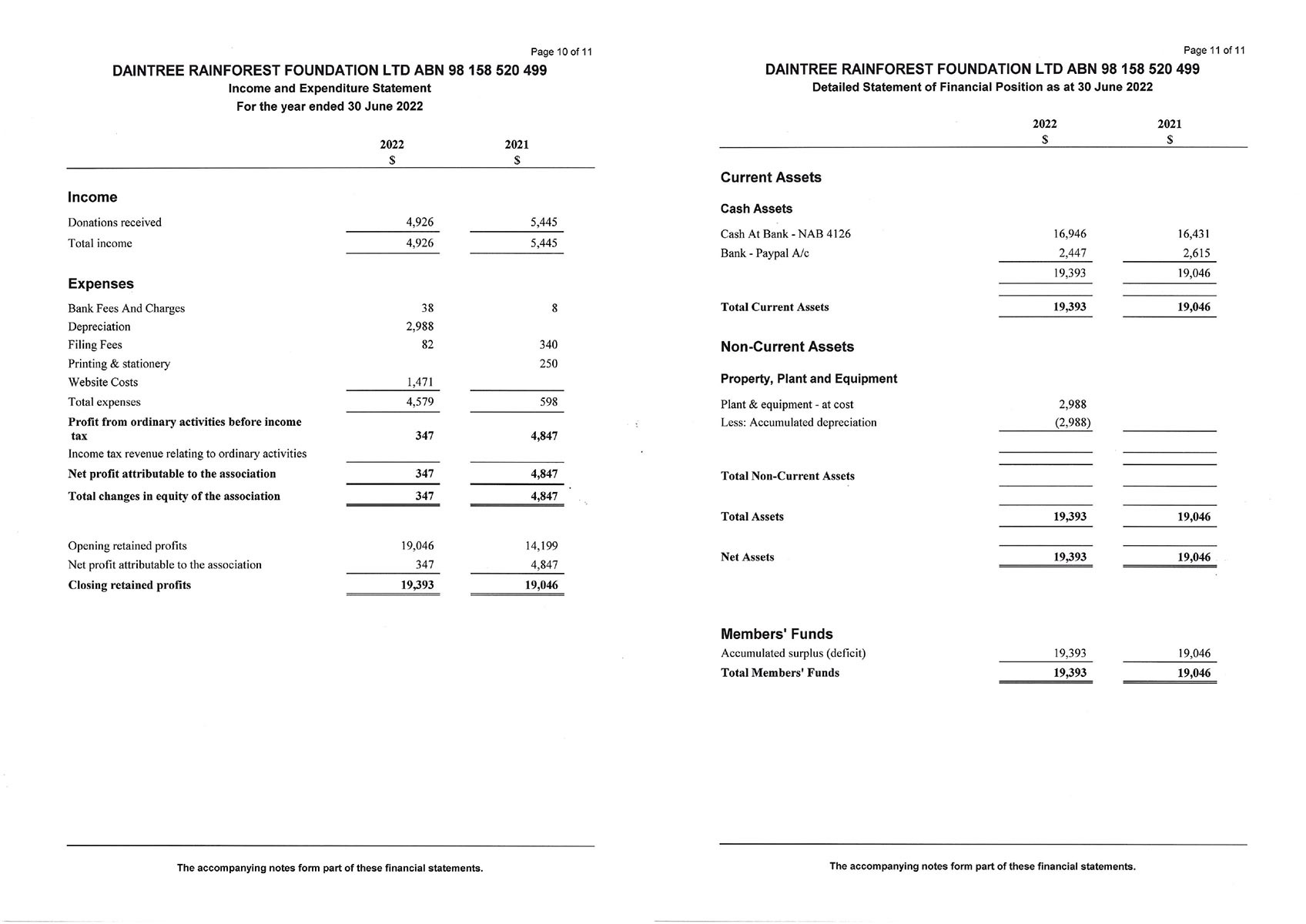2022 ANNUAL REPORT
From the seemingly endless troupe of environmental campaigners marching to the beat of ‘Save the Daintree Rainforest’, one of the Foundation’s most important points of difference is that constitutionally it must perform its functions in a way that is consistent with the protection of inhabitant people. People are not only constituent parts of the legislated definition of ‘environment’, but they are also its sole caretakers and exclusive repository of local knowledge.
Key events across the year
Effective from 26 November 2021, lowland wet-tropical rainforest was listed in the Endangered category of the threatened ecological communities-list under the (Cwlth) Environment Protection and Biodiversity Conservation Act 1999 (EPBC Act). The main factors that made the threatened ecological community eligible for listing in the Endangered category, were its historic losses due to clearing and resulting fragmentation and ongoing threats to its integrity and function. Approved Conservation Advice for the Lowland tropical rainforest of the Wet Tropics establishes two thresholds to determine applicability: Patch-size (anywhere from 0.5-hectares or greater); and biotic condition (cover of native tree species is ≥ 50% and/or tree species richness ≥ 20 species. As these federal protections were already well in place over freehold lands within the Wet Tropics World Heritage Area (WTWHA), it appears the target of the listing was freehold lands outside the WTWHA boundaries.
Another momentous event occurred on 7 March 2022 at Heritage Lodge … in The Daintree, with Assistant Minister to the Minister for Industry, Energy and Emissions Reduction, the Honourable Tim Wilson MP releasing $18.75-million and cutting the virtual ribbon to allow Stage 1 of the Daintree Renewable Microgrid (DRM) to proceed.
Despite the project aiming to protect and conserve the unique environment, promote social, economic and environmental balance and support environmentally sustainable practices, some environmental campaigning is rigorously opposing the project by uncharitably denigrating people within the environment against conservation.
Daintree Rainforest Camera Trap Project
On top of the economic hardships of the recent COVID pandemic and its associated market restrictions, recent heavy rainfall has also added tourism difficulties and played havoc upon satellite communications and the reliability of the Daintree Rainforest Camera Traps. Whilst ordinarily, Daintree Rainforest P/L would donate the full costs of the Daintree Rainforest Camera Trap Project, this year Daintree Rainforest Foundation LTD will have to shoulder the burden of camera replacement.
As a part of its long-term Daintree Rainforest Camera Trap Project, 2022 accrued 1568-cassowary sightings, 212-dingoes and 928-feral-pigs. In comparison with 2021, cassowary numbers increased by 30%, dingoes decreased by 6% and feral-pig sightings also fell by 40%. In terms of annual average, cassowary sightings rose by 37%, dingoes fell by 32% and feral-pigs also diminished by 29%.
Population sightings across 2022
Cassowaries – Dingoes – Feral-pigs:
Comparison 2020 – 2021 – 2022:
Overlay of population sightings between 2020 – 2021 – 2022:
Full copy of annual report (below)
On behalf of the Foundation, I hereby thank the generous contributors to the Daintree Rainforest Fund. I also heartily thank David Bosanquet of Competitive Professional Accounting for his generous and skilful auditing and also the directors, Mr. Ron Shoppee, Mr. Paul Chantrill, Mr. Emrys Nekvapil, Ms. Prue Hewett and Mrs. Angie Hewett for their enthusiasm, dedication and all the various contributions that have brought the Daintree Rainforest Foundation Ltd., successfully to its seventh Annual General Meeting.















